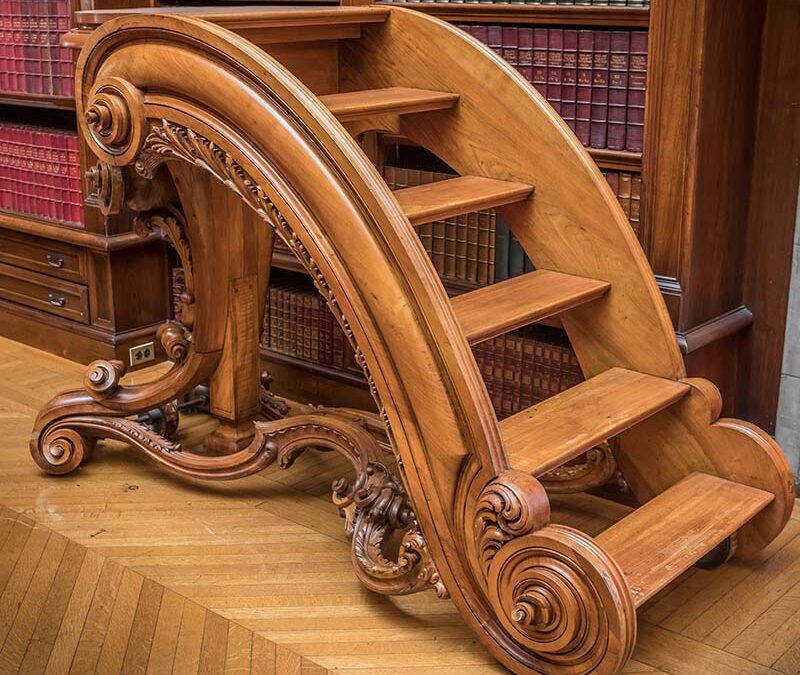Library Steps

| Maker | Richard Morris Hunt, Designer. The Hayden Furniture Company, Maker. |
| Date of Creation | 1897–98 |
| Location | New York |
| Materials | Walnut and metal |
| Institution | Biltmore Estate |
| Credit Line | N/A |
| Accession Number | BH2-00332 |
| Photo Credit | Photo courtesy of The Biltmore Company, Asheville, NC. |
Located in the library of George Vanderbilt’s Biltmore House in Asheville, NC, these walnut library steps tell the story, at the end of the 19th century, of the prosperity of the Gilded Age and the vision of American artists and scholars to create a new identity for their country with the American Renaissance. Richard Morris Hunt—the preeminent American architect of the time—designed the steps and the library within which they reside in the Baroque style to evoke the history of Europe in a new nation, which had only just celebrated its centennial.
Hunt had founded the first architectural school in the United States by 1856, and New York’s elite called upon Hunt to design their private residences and vacation homes. For the Vanderbilt family, Hunt designed grand homes including The Breakers and Marble House in Newport, RI, and the family mausoleum on Staten Island. Vanderbilt grew up knowing Hunt as their “family architect,” and in 1888, he commissioned Hunt to design his vision of a palatial country retreat in the resort town of Asheville. Ground was broken in 1889, and Vanderbilt remained in close touch with Hunt, supervising architect Richard Sharp Smith, and landscape architect Frederick Law Olmsted. Vanderbilt welcomed his friends and family to his new home for the first time at Christmas in 1895.
When the revival styles of the American Renaissance came along, the Industrial Revolution had already provided the United States with modern materials capable of placing utility above all else. The library steps were a necessity to access Vanderbilt’s nearly 23,000 volumes, but functionality alone would not do. Hidden beneath these over-sized steps with flamboyant curves and carved walnut stretchers, decorated with repetitive acanthus leaves, are disguised industrially produced metal axels and wheels.
As practitioners of the American Renaissance style, both Vanderbilt and Hunt sought aesthetics of the past. Vanderbilt, as a descendant of the newly emerged wealthy class, allowed his tastes to be dictated by those of former centuries. He was an avid reader and life-long book collector and built a library to showcase his intellectual passions. Hunt was a student of the Old World’s architecture and drew from the grandeur of the Baroque period to express a sense of history in a newly constructed building. His designs of Biltmore House and some of the furniture in it highlighted his belief that the historic styles of Europe conveyed the impression of wealth, civility, and a lasting importance not only of his client but of his country. These library stairs illustrate the story of the two men who built this unique and influential site. Hunt’s designs speak to Biltmore’s continued legacy in American decorative arts history.

